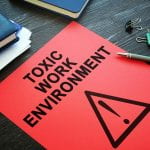WSU GEARS will address three systematic and structural barriers to diversity, equity, and inclusion of women in STEM on our campus: 1) toxic work environment; 2) work/family/life strains and 3) hidden workload burden. The identification of these three key Barriers results in the following objectives: a) counteracting toxic work environment and isolation by creating a culture of inclusion and belonging for women STEM faculty through nuanced data collection on harassment and bullying, Chair and Dean training on toxic work environment, bystander and train-the-trainer trainings, and networking for women; b) integrating work/family/life realities by collecting data on modified duties, sabbaticals and childcare for faculty use, Chair and Dean training on work/family/life strains, and creating a Family Advocacy Network (Wayne FANs); c) enhancing a workload equity tool (Wayne SERVES) to provide evidence-based data and Chair and Dean training on hidden workload burden.
Barrier
Proposed Intervention Strategies
Toxic Work Environment

- data collection on toxic work environment
- chair and dean training programs
- bystander and train-the-trainer programs
- networking for women
Work/Family/Life Strains

- data collection on work/family/life strains
- chair and dean training programs
- Family Advocacy Networks (FANs)
Hidden Workload Burden

- data collection on hidden workload
- chair and dean training programs


